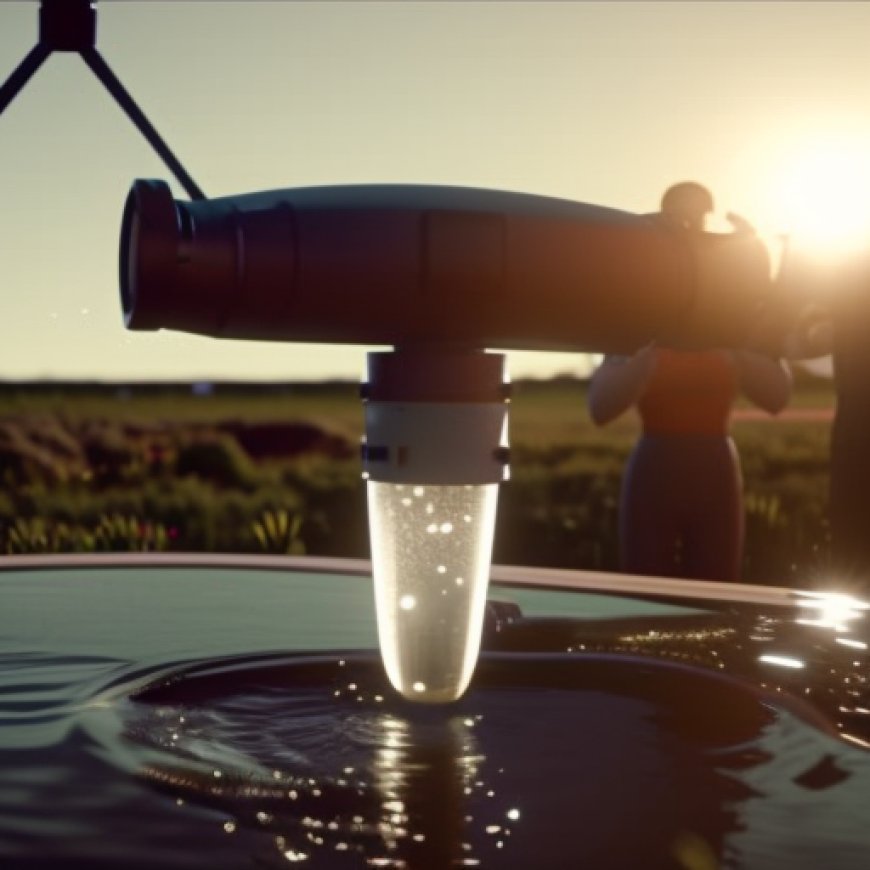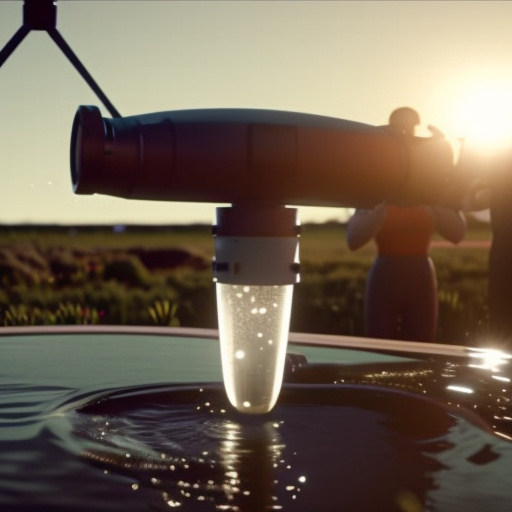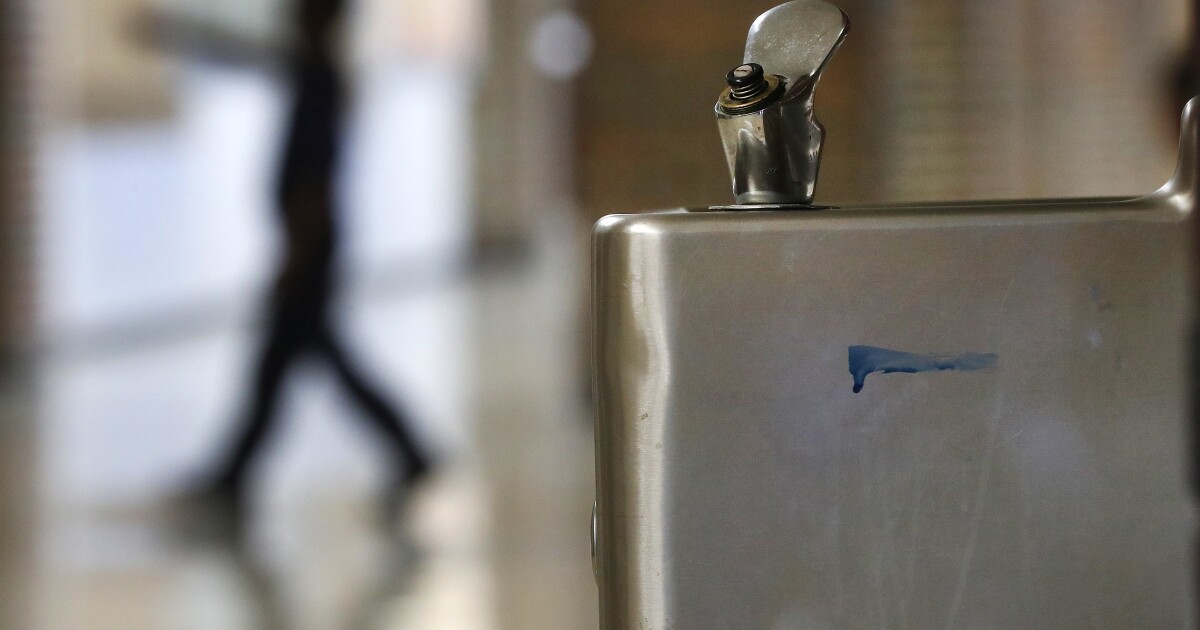EGLE announces $11.7M in MI Clean Water Plan grants
EGLE announces $11.7M in MI Clean Water Plan grants FOX 17 West Michigan News


The Michigan Department of Environment, Great Lakes and Energy Announces $12 Million in Grants for Water Infrastructure Upgrades

LANSING, Mich. — The Michigan Department of Environment, Great Lakes and Energy (EGLE) has announced the allocation of nearly $12 million in grants to upgrade water infrastructure in communities throughout the state.
The grants, known as the MI Clean Water Plan grants, are aimed at achieving the Sustainable Development Goals (SDGs) by ensuring clean drinking water, managing wastewater, and protecting public health and natural resources.
The funding includes $11.7 million from EGLE’s Drinking Water State Revolving Fund (DWSRF), Drinking Water Asset Management (DWAM) Program, Consolidation and Contamination Risk Reduction (C2R2) Program, as well as federal sources.
EGLE reports that over 1,000 community wastewater systems serve 70 percent of the population in Michigan, while a similar percentage relies on community water systems for drinking water. However, these systems often face challenges in addressing aging infrastructure and emerging issues such as new PFAS standards.
The Governor of Michigan, Gretchen Whitmer, the Michigan Legislature, and federal agencies have been increasing funding for aging water infrastructure. This investment is crucial to ensure that these water systems can continue to protect public health and the environment.
Breakdown of the $11.7 million in grants:
Grants through DWSRF:
- $10,105,000 to the city of Highland Park: Watermain and lead service line replacements throughout the city— About four miles of the existing cast-iron watermain will be replaced with eight-and-12-inch diameter pipe along John R Street, Brush Street, Tennyson Street, Oakland Park Boulevard and Hamilton Avenue, and about 138 public and private service lines will be replaced along Tennyson Street and throughout the city.
Grants through C2R2:
- $491,122 to the city of Ann Arbor: Improve PFAS removal efficiency— The city replaced filters at its water treatment plant with granular activated carbon, since discovering PFAS in its water source in 2016. This project will replace the filter underdrains in two of the filters.
Grants through DWAM:
- $196,453 to the city of Grand Rapids: Identify the locations of lead lines prior to removal— As part of the city’s Distribution System Materials Inventory, crews will conduct field verification of lead water service lines for a minimum of 383 service lines out of the city’s total of 84,248, and restoring to original condition after field work occurs at these locations.
- $208,717 to the village of Mayville: Identify the locations of lead lines prior to removal— As part of the village’s Distribution System Materials Inventory and drinking water Asset Management Plan, crews will conduct field verification for a minimum of 82 service lines out of the village’s total of 412, and restoring to original condition after field work occurs at these locations.
Grants through the federal Bipartisan Infrastructure Law (BIL):
- $234,000 to the city of Rockford: Assess potential PFAS source areas to the municipal collection system— This project includes starting to plan for corrective actions to minimize the potential for the pollutant to reach surface waters.
- $234,000 to the city of Cedar Springs: Assess potential PFAS source areas in the Russell Ridge neighborhood, the wastewater collection system and at the wastewater treatment plant— The project includes evaluating potential groundwater impacts at the city’s wastewater treatment plant discharge field and former lagoon area.
- $234,000 to the city of Bronson: Assess potential PFAS source areas in the wastewater collection system and at the wastewater treatment plant— This project includes creating plans to address the sources and minimize impacts to surface water.
Since January 2019, the state of Michigan has invested more than $4 billion in upgrading drinking water, stormwater, and wastewater facilities.
SDGs, Targets, and Indicators in the Article
1. Which SDGs are addressed or connected to the issues highlighted in the article?
- SDG 6: Clean Water and Sanitation
- SDG 11: Sustainable Cities and Communities
- SDG 13: Climate Action
2. What specific targets under those SDGs can be identified based on the article’s content?
- SDG 6.1: By 2030, achieve universal and equitable access to safe and affordable drinking water for all.
- SDG 6.3: By 2030, improve water quality by reducing pollution, eliminating dumping, and minimizing release of hazardous chemicals and materials.
- SDG 11.1: By 2030, ensure access for all to adequate, safe, and affordable housing and basic services and upgrade slums.
- SDG 11.3: By 2030, enhance inclusive and sustainable urbanization and capacity for participatory, integrated, and sustainable human settlement planning and management.
- SDG 13.1: Strengthen resilience and adaptive capacity to climate-related hazards and natural disasters in all countries.
3. Are there any indicators mentioned or implied in the article that can be used to measure progress towards the identified targets?
Yes, the article mentions specific projects and initiatives that can serve as indicators for measuring progress towards the identified targets. These include:
- Replacement of cast-iron watermain with new pipes (indicator for SDG 6.1)
- Improvement of PFAS removal efficiency through filter replacement (indicator for SDG 6.3)
- Identification of lead lines prior to removal and restoration (indicators for SDG 11.1 and SDG 11.3)
- Assessment of potential PFAS source areas and planning for corrective actions (indicator for SDG 13.1)
SDGs, Targets, and Indicators
| SDGs | Targets | Indicators |
|---|---|---|
| SDG 6: Clean Water and Sanitation | 6.1: By 2030, achieve universal and equitable access to safe and affordable drinking water for all. | – Replacement of cast-iron watermain with new pipes – Improvement of PFAS removal efficiency through filter replacement |
| SDG 11: Sustainable Cities and Communities | 11.1: By 2030, ensure access for all to adequate, safe, and affordable housing and basic services and upgrade slums. | – Identification of lead lines prior to removal and restoration |
| 11.3: By 2030, enhance inclusive and sustainable urbanization and capacity for participatory, integrated, and sustainable human settlement planning and management. | – Identification of lead lines prior to removal and restoration | |
| SDG 13: Climate Action | 13.1: Strengthen resilience and adaptive capacity to climate-related hazards and natural disasters in all countries. | – Assessment of potential PFAS source areas and planning for corrective actions |
Behold! This splendid article springs forth from the wellspring of knowledge, shaped by a wondrous proprietary AI technology that delved into a vast ocean of data, illuminating the path towards the Sustainable Development Goals. Remember that all rights are reserved by SDG Investors LLC, empowering us to champion progress together.
Source: fox17online.com

Join us, as fellow seekers of change, on a transformative journey at https://sdgtalks.ai/welcome, where you can become a member and actively contribute to shaping a brighter future.







